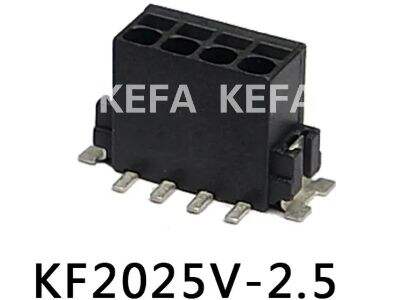Surface Mount Technology (SMT) Process
In today's rapidly changing technology-based world, such as the electronics manufacturing industry that KEFA is a part of, manufacturers and suppliers are continuously faced with the challenge to optimize their production process in terms of time and quality. One of many such technologies is Surface Mount Technology (SMT). SMT refers to a way of building electronic circuits in which the components are mounted directly onto the surface of PCBs. Many advantages flow from this process, such as savings of cost, improvement of functions and enhancement of design flexibility. In the following article series we will analyze the SMT technology in detail and evaluate how it is changing the world of electronics manufacturing.
Efficiency and quality control under the microscope
As with any manufacturing, production and quality assurance rank high on the priority list when it comes to SMT. With the advantage of SMT Terminal block, manufacturers of electronics such as KEFA can simplify their manufacturing procedures, lower production costs and enhance products quality. SMT is a method of inserting an electronic component on to the surface of PCB without through-holes. This not only minimizes size and weight of the end product but even facilitates assembly time and production throughput. SMT also offers better precision and accuracy for component placement, which means higher reliability and less defects in the final products.
Performance and Reliability Boosts
Performance and reliability are critical in electronic manufacturing, with the SMT process essential for top performance in both. Through SMT, manufacturers can also attain higher levels of performance as the parts are smaller and lighter as well as experience shorter interconnect lengths on the PCB. This leads to better signal integrity with less EMI and reduced power consumption. In addition, the placement of components on a surface provides a finished product that is mechanically stronger and more reliable because there are fewer mechanical connections likely to fail over time.
Techniques for Enhancing Design
The most important benefit of SMT is its improved design freedom and the possibility to place components much closer together. With SMT manufacturers can create more compact and intricate PCBs because the components are placed closer together, in a tighter array and also with greater accuracy. This flexibility that is inherited in the structure allows development of novel and small electronic paper devices which are able to tend to changing market requirements. The machine-based process of smt connector also ensures that component placement is quick and accurate, helping to minimize the possibility of errors and improving value across the board. By investigating radical design and component placement approaches, the limits of electronic device manufacture can be extended.
Exploiting SMT Technology to the Full
The Surface Mount Technology (SMT) Program becomes the predominant methodology which offers cost-effective solution to obtain a better performance, quality, reliability and keep good productivity of electronics industry. KEFA and businesses of their ilk are using SMT to help keep up with the pack, as well as to predict what that market will need next. By mastering the details of SMT technology, seeking strategies for greater design freedom and component positioning, and emphasizing cost-effectiveness and quality control, manufacturers can leverage smt board to board connector to develop electronic devices that are truly innovative and provide value to their customers. SMT technology will grow in importance as our ways of life are influenced more and more by lighter, thinner, smaller electronic products.

